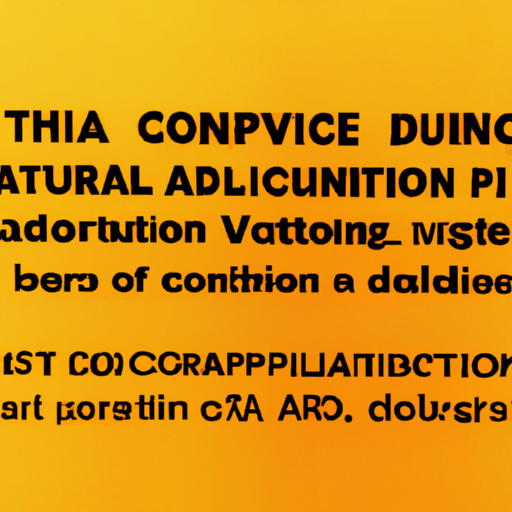
-
Table of Contents
Typography in Packaging Label Design: Communicating Information

Typography plays a crucial role in packaging label design, as it serves as a powerful tool for communicating information to consumers. The choice of fonts, sizes, and styles can significantly impact how consumers perceive a product and its brand. In this article, we will explore the importance of typography in packaging label design and how it can effectively convey information to consumers.
The Role of Typography in Packaging
Typography is more than just selecting a font for a label; it is about creating a visual language that communicates the essence of a product. When it comes to packaging, typography serves several important functions:
- Brand Identity: Typography helps establish and reinforce a brand’s identity. Consistent use of fonts across different products creates a cohesive brand image and helps consumers recognize and connect with the brand.
- Product Differentiation: Typography can differentiate a product from its competitors. Unique and well-designed typography can make a product stand out on the shelf and attract consumers’ attention.
- Information Hierarchy: Typography helps organize information on a label, making it easier for consumers to understand and navigate. By using different font sizes, styles, and colors, important information can be emphasized, while secondary details can be presented in a more subtle manner.
- Emotional Appeal: Typography can evoke emotions and create a specific mood or feeling. The choice of fonts and styles can convey a sense of luxury, playfulness, or trustworthiness, depending on the desired brand image.
Choosing the Right Fonts
When selecting fonts for packaging label design, it is essential to consider the brand personality, target audience, and the product itself. Here are some key factors to keep in mind:
- Legibility: The primary purpose of typography is to convey information, so legibility should be a top priority. Fonts should be easy to read, even at small sizes or from a distance.
- Brand Consistency: Fonts used in packaging should align with the overall brand identity. If a brand already has established fonts for its logo or other marketing materials, it is advisable to use those fonts to maintain consistency.
- Audience Appropriateness: Fonts should resonate with the target audience. For example, a playful and whimsical font may be suitable for children’s products, while a sophisticated and elegant font may be more appropriate for luxury goods.
- Product Context: Consider the product’s characteristics and packaging design when choosing fonts. Fonts should complement the overall aesthetic and enhance the product’s message.
Case Studies: Effective Typography in Packaging
Let’s explore some real-world examples of packaging label designs that effectively utilize typography to communicate information:
1. Coca-Cola
Coca-Cola’s iconic logo is a prime example of effective typography. The unique script font instantly evokes a sense of nostalgia and familiarity. The font choice has remained consistent for decades, contributing to the brand’s recognition and success.
2. Innocent Drinks
Innocent Drinks, a UK-based company known for its smoothies and juices, uses playful and hand-drawn typography on its packaging. The whimsical fonts convey the brand’s fun and lighthearted personality, appealing to a younger audience.
3. Aesop
Aesop, a luxury skincare brand, utilizes clean and minimalist typography on its packaging. The simple yet elegant fonts reflect the brand’s commitment to quality and sophistication, appealing to discerning consumers.
The Impact of Typography on Consumer Perception
Typography has a significant impact on how consumers perceive a product and its brand. Here are some key ways typography influences consumer perception:
- Trust and Credibility: Well-designed typography can convey professionalism and trustworthiness, making consumers more likely to perceive a product as reliable and of high quality.
- Emotional Connection: Typography can evoke emotions and create a connection with consumers. Fonts that align with a brand’s personality and values can resonate with consumers on a deeper level.
- Product Attributes: Typography can communicate specific product attributes. For example, bold and vibrant fonts may suggest energy and excitement, while elegant and refined fonts may imply luxury and sophistication.
- Perceived Value: Typography can influence consumers’ perception of a product’s value. Well-executed typography can make a product appear more premium and justify a higher price point.
Summary
Typography plays a vital role in packaging label design, allowing brands to effectively communicate information to consumers. By carefully selecting fonts, sizes, and styles, brands can establish their identity, differentiate their products, and create an emotional connection with consumers. Legibility, brand consistency, audience appropriateness, and product context are crucial factors to consider when choosing fonts. Real-world examples, such as Coca-Cola, Innocent Drinks, and Aesop, demonstrate the power of typography in packaging design. The impact of typography on consumer perception cannot be underestimated, as it influences trust, emotional connection, product attributes, and perceived value. By understanding the importance of typography in packaging label design, brands can create compelling and informative packaging that resonates with consumers and drives sales.
